
Winston Churchill said that “History is written by the victors,” and while that may be true of war, the history of firearms is written by those who used them, lived and died by them and made them legendary beyond their own time. We bring you 12 examples:
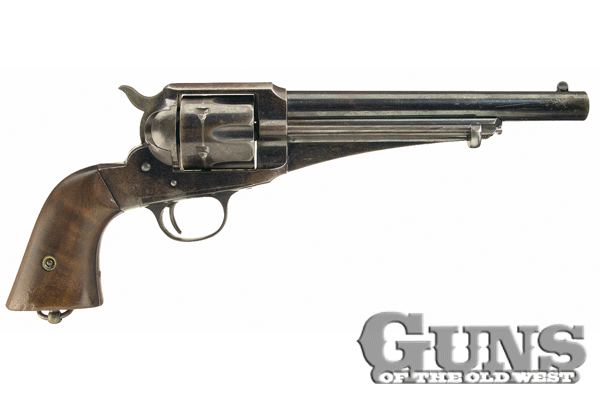
1. Remington Model 1875 It took Remington until 1875 to introduce an all new single-action revolver to compete with Colt andS&W, but Remington would never quite capture the market, even though its 1875 and later Models 1888 and 1890 would be carried by famous lawmen and notorious outlaws such as Jesse and Frank James. When Frank James surrendered after the murder of Jesse, he handed over one of his 1875 Remingtons. The other had been given to a doctor in return for patching him up. Frank James lived until 1915 and appeared in Wild West showed before he died at the age of 72.
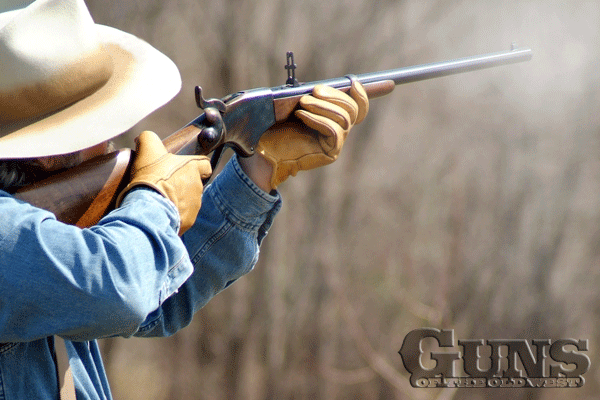
2. Spencer Repeater Despite its fame today, during the Civil War the Henry was eclipsed by the most successful repeating rifle of the 1860s, the Spencer, which was carried by thousands of Union troops and cavalrymen. It was designed by Christopher Spencer and patented in 1860. Like all of Spencer’s designs, his seven-shot repeating rifle was over-engineered, almost to a fault. Simple in its operation, it was built to withstand heavy use; the 1860 Spencer was, pardon the pun, “bulletproof.”
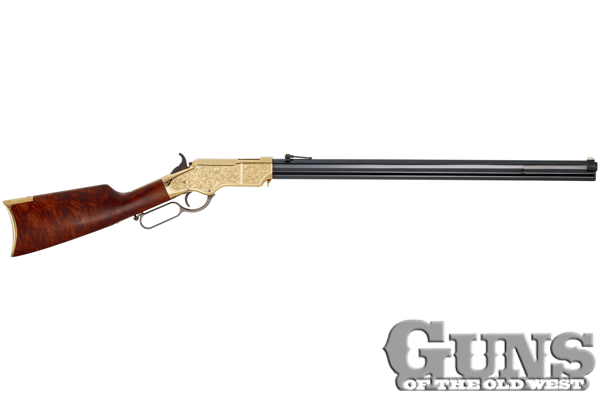
3. Henry Lever Action The Henry is the most famous today, particularly with the ongoing Civil War Sesquicentennial Celebration. Inventor Benjamin Tyler Henry created the rifle bearing his name in 1860 for Oliver Winchester’s New Haven Arms Co. and received his first patent on the repeating lever action rifle that October. The start of the Civil War immediately placed high demand on the 16-shot .44 Henry rimfire repeater. Carried by Union troops (often at their own expense or that of regimental commanders), Confederates on the receiving end of Henry repeaters began calling it that “damned Yankee rifle you can load on Sunday and shoot all week.” During the War Between the States.
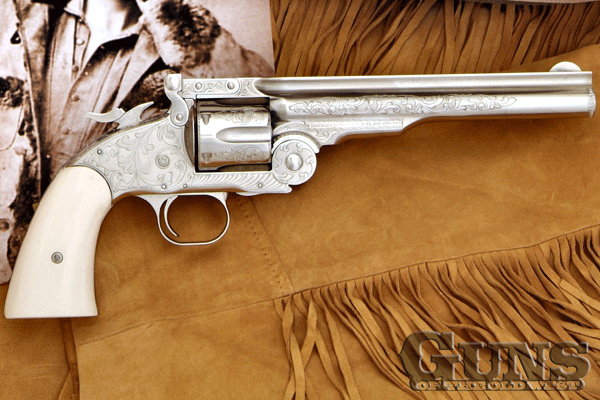
4. Smith & Wesson Schofield While Colt was finalizing its benchmark 1873 Single Action, the celebrated Peacemaker, Smith & Wesson was introducing its first large-caliber revolver, the Model 3 American First Model top-break, in 1870. By 1873, S&W had the Model 3 American Second Model available, and the First and Second Model Russian variations. By 1875, the now-legendary First Model Schofield was introduced, and S&W was vying with Colt for government contracts. A variation of the S&W Model No. 3, the gun took its name from Major George W. Schofield of the 10th Cavalry.
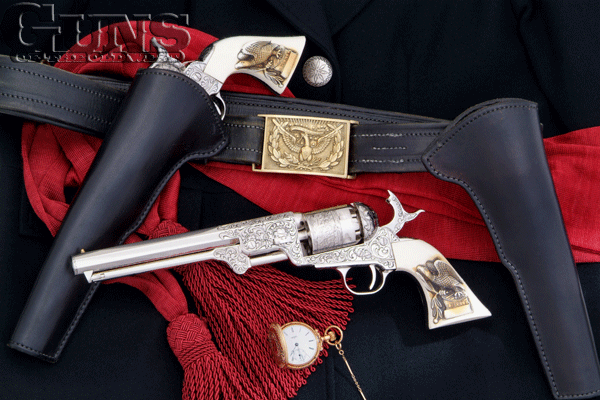
5. Colt 1851 Navy In the early years of the Western frontier, there were many handguns and rifles in common use, but by the 1850s one handgun had risen to the top as the most popular, Samuel Colt’s Model 1851 Navy revolver. The .36 caliber revolver was to be the second most successful percussion handgun ever manufactured by Colt, exceeded only by the 1849 Pocket Model. The Navy, however, had a life that extended well beyond its production from 1850 to 1873, with more than of 255,000 being built. More soldiers carried the 1851 Navy during the Civil War than any other, as it had been the standard-issue sidearm prior to the Southern secession in 1860 and 1861, and in the hands of former Union soldiers who sided with the Confederacy.
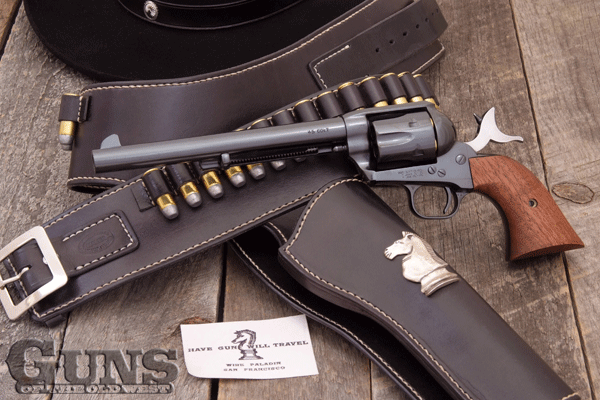
6. Colt Single Action Army When 1873 rolled around, Colt had already unveiled its William Mason-designed “New Model Army Metallic Cartridge Revolving Pistol,” and the U.S. military was chomping at the bit. In fact, Ordnance Department orders were so high that civilians rarely saw an 1873 Colt SAA until late in 1874. With only a brief period between World War II and 1955, when the Peacemaker was temporarily discontinued, it has been built by Colt longer than any other revolver manufactured anywhere in the world, and it’s become the quintessential handgun of the American cowboy.
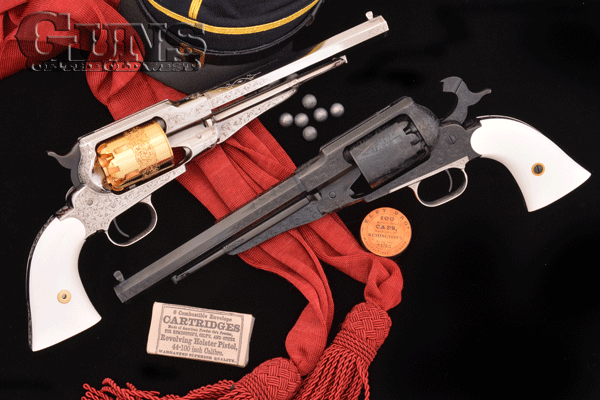
7. Remington New Model Army Outside of the Colt 1851 Navy and 1860 Army, the next most commonly carried sidearms of Union soldiers were the Remington Army Models of 1858 and 1861 and the New Model of 1863 in .44 caliber. Production exceeded 122,000 for the New Model Army, and Remington continued to manufacture the guns until 1875, when it introduced its first all-new cartridge revolver (this is in addition to earlier percussion models converted by Remington to fire metallic cartridges beginning in 1869). The Remington was another Civil War gun that found its way West in the holsters of ex-Union and Confederate soldiers searching for a new life in the 1870s
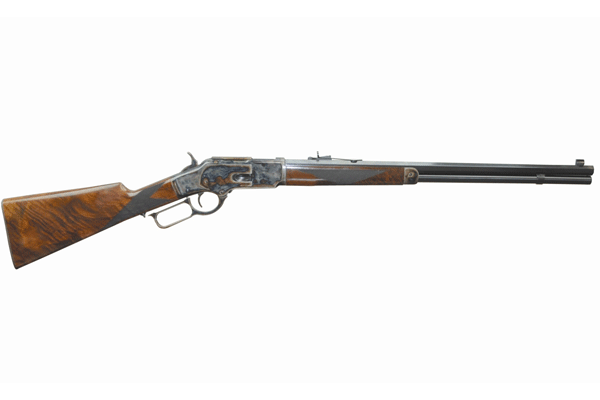
8. Winchester Model 1873 “The gun that won the West” has often been used to glorify the Winchester Model 1873, and there is certainly a great deal of merit in that assertion, as Winchester certainly left an indelible mark on the American West. After parting ways with Benjamin Tyler Henry in 1865, Oliver Winchester started the Winchester Repeating Arms Co., and his first new rifle was the Model 1866 designed by Nelson King. King’s improvements to the Henry lever action included a loading chamber in the right side of the receiver and an enclosed cartridge magazine running under the barrel. He even managed to increase the cartridge capacity from the Henry’s 16 to an impressive 17 rounds!
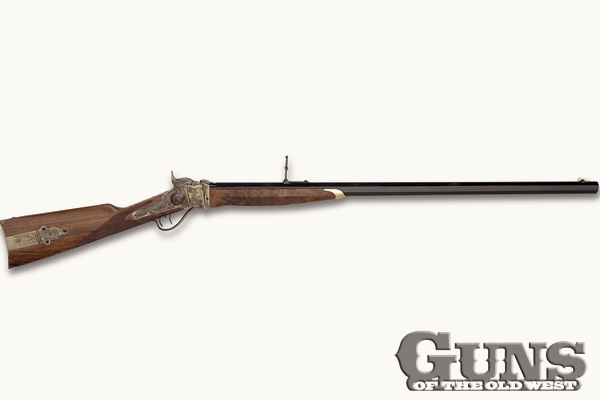
9. Sharps Rifles Sometimes one shot was enough. At least it was for Christian Sharps and thousands of men who used his rifles in the War Between the States and carried them westward in the 1870s. If there is one gun that truly defines America’s Western Expansion in the 1870s, it is not the Colt or Winchester repeater, but the single-shot Sharps rifle. Sharps wanted to make loading and charging a rifle faster; his idea was to do it all from the breech end. A March 9, 1850, article in Scientific American extolled the advantages of the Sharps breechloader, stating that a man with no previous weapons experience could fire it up to nine times in a minute and place every bullet within a 6-inch circle 40 yards away.
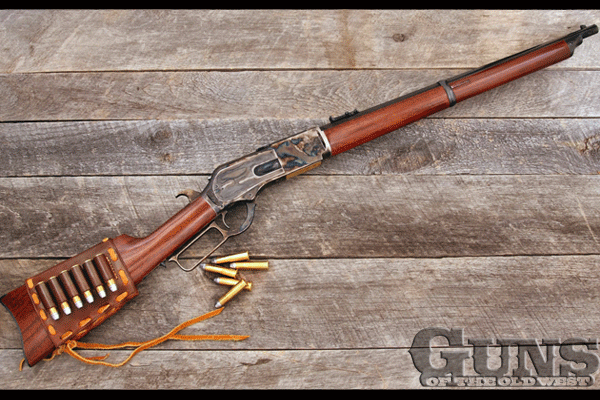
10. Winchester Model 1876 The Winchester Repeating Arms Co. continued to improve its designs even while the 1873 was the top-selling rifle in America. The one big complaint had always been the limitations of the design in terms of more powerful cartridges. Working with John M. Browning, Winchester combined the power of a large-caliber single-shot rifle with the styling of the 1873 to develop the 1876 Centennial model. Looking nearly identical to the 1873, the frame of the Centennial was a full 1½ inches greater in length, had more heft, and when compared to the .44-40 models, was clearly larger
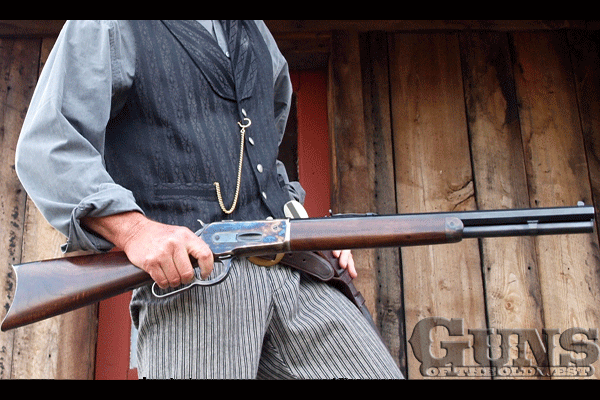
11. Winchester Model 1886 Winchester finally developed a .45-70 model to meet government cartridge standards in 1886. This is the last of the legendary Winchester models to be among the top 12 guns. With the introduction of the even more powerful Model 1886 chambered for the .45-70 Government cartridge, Winchester added another legendary rifle to its history. The Model 1886 was produced until 1935, and approximately 160,000 were built in the greatest variety of calibers of any Winchester lever action up to that point. In addition to the long-anticipated .45-70 Government cartridge, the 1886 was offered in .33 WCF, .38-56 WCF, .38-70 WCF, .40-65 WCF, .40-70 WCF, .40-82 WCF, .45-90, .50-100 Express, and .50-100-450.
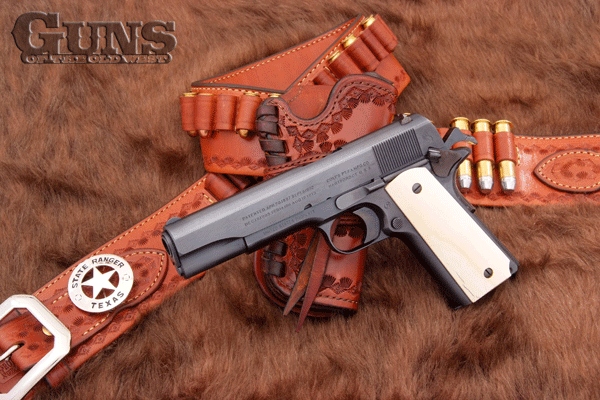
12. Colt Model 1911 The Wild West began with a Colt and its history ended with a Colt, the Model 1911. The Model 1911 semi-automatic pistol was developed by Colt and John M. Browning. On March 3, 1911, the new semi-auto passed all Ordnance Department tests and on March 29, U.S. Secretary of War Jacob M. Dickinson approved the selection of the Colt as the “Automatic Pistol, Caliber .45, M1911.” This was to become our military’s first standard-issue semi-automatic sidearm. The government’s initial order was for 31,344 pistols. By the end of World War II, over 2.5 million M1911/1911A1s had been produced for the U.S. government.
